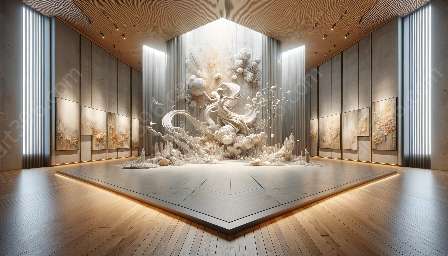Art installations have become significant in shaping the cultural landscape, producing a profound influence on society and the way we perceive art. In this comprehensive guide, we delve into the cultural implications of art installations and explore how they compare to traditional art forms.
Understanding the Role of Art Installations
Art installations are immersive, three-dimensional works that exist within a specific space, engaging viewers in a unique experience. Unlike traditional art forms, installations often blur the lines between art, architecture, and the environment, transcending the boundaries of conventional artistic expression. This has profound cultural implications, as it challenges the audience to rethink their perceptions of art and its relationship to the world around them.
Impact on Society
Art installations have the power to provoke, inspire, and incite discourse within society. By addressing pertinent social, political, and cultural issues, installations can serve as a catalyst for meaningful dialogue and introspection. Furthermore, installations situated in public spaces can democratize art, making it accessible to a broader audience and enhancing cultural inclusivity.
Spatial Transformation
One of the most striking cultural implications of art installations is their ability to transform physical spaces. Whether exhibited in galleries, museums, or public areas, installations have the potential to reshape our understanding of environment and architecture, adding layers of meaning and significance to the spaces they inhabit. This transformation of space contributes to the cultural dialogue and challenges established norms of artistic presentation.
Perception and Experience
Art installations invite viewers to engage with art on a sensory and emotional level, transcending the traditional passive observation of artwork. As a result, they have the power to ignite personal introspection and alter the way individuals perceive and experience art, thereby influencing cultural attitudes towards artistic expression.
Art Installations vs. Traditional Art Forms
Comparing art installations to traditional art forms reveals distinct cultural implications. Traditional art often exists within a framed or confined space, whereas art installations permeate and interact with the space itself, blurring the boundaries between art and its environment. Moreover, while traditional art is often created for individual contemplation, installations foster communal engagement and dialogue, reflecting shifting cultural values and societal dynamics.
Conclusion
In conclusion, art installations hold profound cultural implications, shaping society, space, and perception in unique and compelling ways. By challenging traditional artistic norms and engaging with audiences on a visceral level, installations contribute to the evolving landscape of cultural expression and artistic experience.

